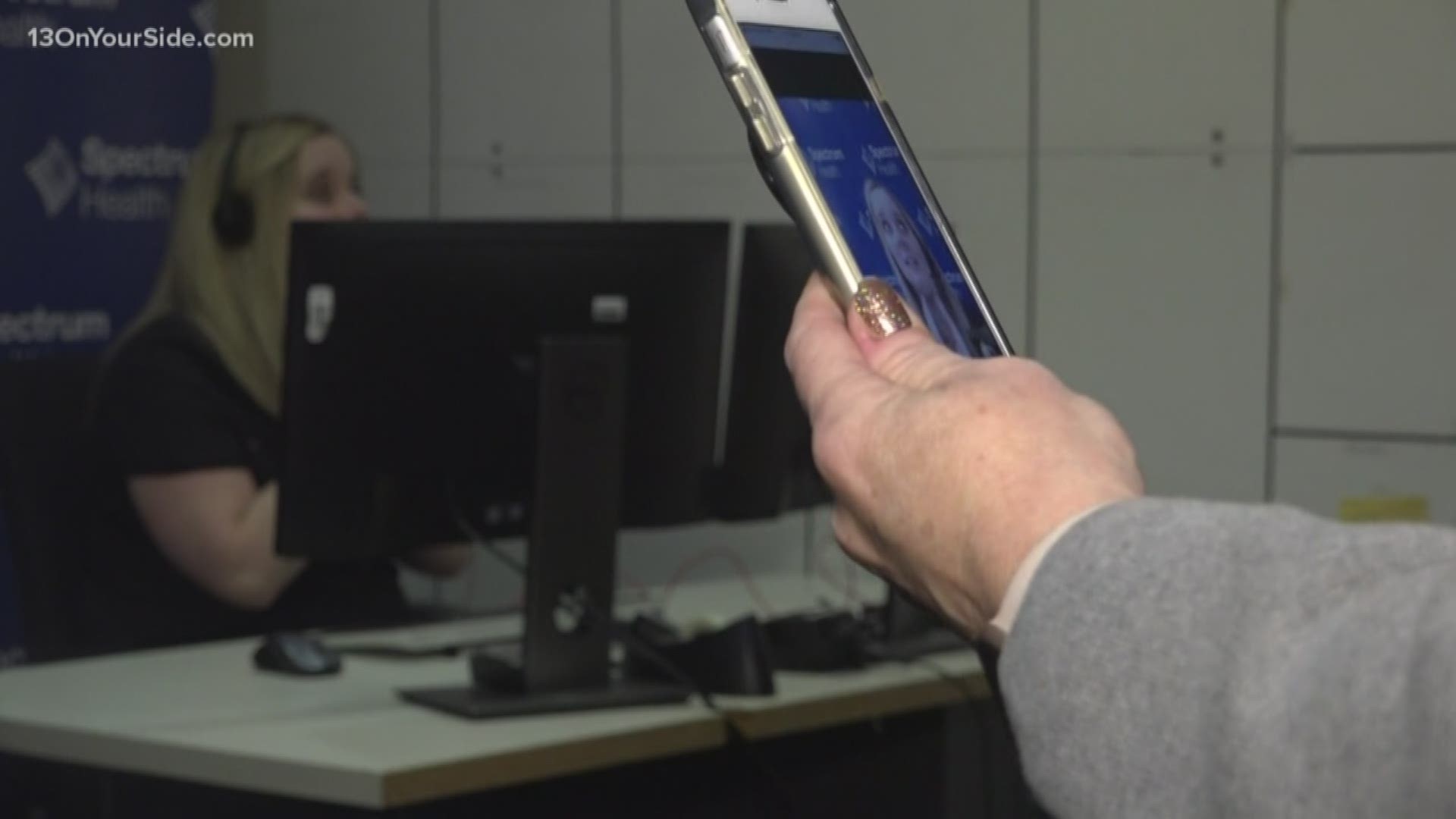GRAND RAPIDS, Mich. — (GRBJ) - Since its start in 2015, Spectrum Health’s telemedicine service has saved payers and patients and estimated $9.4 million.
Through the Spectrum Health Now website and app, the health system offers appointments through video calls for low-acuity issues to anyone in the state, allowing many patients to stay home rather than travel to seek care.
It increases access to care, especially for people in rural areas. It also reduces costs for all parties and reduces the spread of diseases, said Elizabeth Suing, Spectrum physician assistant.
And for people who feel too awful to leave the house, it’s convenient. She said there likely always will be a place for in-person meetings, but telemedicine definitely has its niche.
“Being able to be seen right in your bed is a really big plus,” she said.
Spectrum has tallied more than 28,000 visits by patients who said they would have used urgent care or the emergency department if the service had not been available. Based on Spectrum’s research, it costs an average of $370 to visit the emergency room, $150 for urgent care and $100 for an office visit.
Most insurances cover telemedicine visits. Otherwise, the maximum charge would be $45, according to the health system.
Of the 11,461 visits between October 2019 and mid-February, about 26% of those patients said they avoided urgent care or the emergency department, saving an estimated $815,554, Spectrum said.
And the service is growing. This winter has been its busiest season yet.
The busiest day was right after last Christmas, with 136 visits, more than half flu-related. There’s now an average of about 100 virtual visits per day, with about 55% being for flu-related symptoms.
There were 2,600 downloads of the Spectrum Health Now app in December alone.
“When it first began, at least in West Michigan, a lot of people hadn’t heard of telemedicine before, and so it was a cultural change,” Suing said. “But now that a lot of patients have realized that it's the same quality of care as they would receive in person, they really have embraced it.”
There are 24 Spectrum providers that offer services through telemedicine. There are a handful of full-time providers dedicated to Spectrum Health Now, but most of the providers do both in-person and virtual visits.
Patients can make an appointment for the service through one of the digital platforms or by calling. Depending on the capacity that day, patients could be seen in five minutes or later in the day, Suing said.
Ten minutes before the appointment time, a medical assistant calls the patient to ensure there are no technical issues and to gather initial information as it would happen in a physical office. A provider then completes a virtual version of an exam and then can offer advice and prescribe medication.
Anyone with needs related to cold, flu, bladder infection, rash, poison ivy, birth control, smoking cessation or other non-emergencies can use the service, Suing said. Patients with chest pain, trouble breathing or any other emergency symptoms should go the emergency room, not seek care via telemedicine.
If someone is not sure where to go, Suing said starting with telemedicine is a good option. If the provider decides the patient needs to have an in-person visit instead, there would be no telemedicine charge.
The implementation of the program comes from Spectrum’s conversations about thinking of patients as consumers, said Keith Hustak, vice president of app services and operations for Spectrum.
“Everything is via phone nowadays, whether you're buying products online, groceries online, it's all done via the phone. So health care needs to evolve and do the same.”
In comparison to the traditional model, in which patients must seek out doctors in office building, Hustak said Spectrum is working to make care convenient and more affordable. The health system opened a walk-in clinic last fall in the recently renovated Meijer in Wyoming, at 5500 Clyde Park Ave. SW, for example.
“We've got to meet the patient where they are,” Hustak said.
Over the next three years, Spectrum has a goal of using telemedicine to complete 50% of primary care visits, 25% of specialty visits and 30% of workforce visits. Spectrum is in the process of gathering data to determine how big of a jump this will be.
“That sounds impossible, but we think that if we start with big goals, we might be able to get there,” Hustak said. “That is really audacious, but we feel good about it. We feel like there are certain things that we can do to transform practice to make this really a reality for us.”
RELATED VIDEO:
More GRBJ stories on 13 ON YOUR SIDE:
►Make it easy to keep up to date with more stories like this. Download the 13 ON YOUR SIDE app now.
Have a news tip? Email news@13onyourside.com, visit our Facebook page or Twitter. Subscribe to our YouTube channel.


